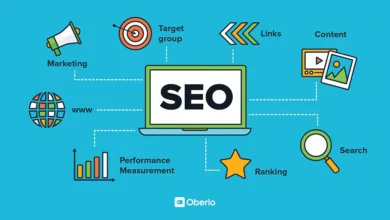PBN (Private Blog Network): The Controversial SEO Strategy Explained

If you’ve been hanging around the SEO world for a while, chances are you’ve come across the term PBN, which stands for Private Blog Network. It’s a strategy that can either supercharge your website’s rankings or tank it completely—depending on how you use it (or abuse it). In this article, we’re diving deep into what PBNs are, how they work, why they’re controversial, and whether they still have a place in today’s SEO game.
What is a PBN, Exactly?
A Private Blog Network is essentially a group of websites that are built with one main purpose: to create backlinks to another website in order to boost its rankings in search engine results—usually Google. These networks are often made up of expired domains that previously had authority and backlinks, giving the new owner a head start in building “trust” in Google’s eyes.
PBNs are usually privately owned (hence the name) and are meant to look like standalone, unrelated websites. But behind the scenes, they’re all connected by one goal—pointing link juice to the “money site” (the site you actually want to rank).
The key to a successful PBN is making each site in the network look real. This means adding decent content, unique designs, different hosting IPs, and avoiding obvious footprints that could alert Google’s algorithms.
But here’s the kicker: Google is not a fan of Private Blog Networks. They’re considered a black-hat SEO tactic because they manipulate search rankings in a way that goes against Google’s guidelines. So while they can work, they also come with a hefty dose of risk.
How Do Private Blog Networks Actually Work?

At a basic level, Private Blog Networks work by leveraging the authority of older domains. When a domain expires and is no longer renewed, it becomes available for purchase. If that domain had a solid backlink profile—meaning other high-authority sites had linked to it in the past—it can still carry some of that authority even after being re-registered.
Here’s how the process usually unfolds:
- Buying Expired Domains: SEO-savvy individuals scout for expired domains with clean backlink profiles and good domain authority. Tools like DomCop, ExpiredDomains.net, and Ahrefs are often used for this.
- Rebuilding the Site: Once they get the domain, they rebuild a site on it that looks legit—usually including blog posts, an “About” page, and sometimes even social profiles. The goal is to make it look like a functioning website with a purpose beyond just linking out.
- Placing Backlinks: Strategic backlinks are then added within the content, pointing toward the money site. These backlinks are designed to appear natural, surrounded by contextually relevant content.
- Diversifying the Network: To avoid footprints (patterns that Google can detect), each site in the PBN is hosted on different IPs, uses different themes, and sometimes even different CMS platforms.
So, in short, a well-built PBN feeds link authority to a money site under the radar, tricking Google into thinking that this site is gaining natural, high-quality backlinks.
The Pros of Using a PBN (Yes, There Are Some)
Despite the risks, there are reasons people still build and use PBNs—mainly because, when done correctly, they can work.
1. Faster Rankings
If you’re tired of waiting months for organic backlinks to roll in, a PBN gives you full control over the backlink process. You can shoot up in rankings a lot faster than with traditional white-hat methods.
2. Total Control
Unlike guest posting or outreach campaigns, with a PBN you control every aspect of the backlink—its anchor text, the page it points to, the frequency, everything. This level of control allows for precise SEO experiments.
3. No More Begging for Links
Outreach can be time-consuming and, let’s be real, kind of soul-draining. With a PBN, you don’t have to pitch 100 bloggers and pray someone links to you. You just do it yourself.
That being said, the potential rewards come with significant risk. That leads us to…
Why PBNs Are Risky and Controversial
Google isn’t stupid. Its algorithms have gotten incredibly smart at spotting manipulation tactics like PBNs. In fact, Google has publicly stated that participating in link schemes—including PBNs—can result in penalties that hurt your rankings or even get your site deindexed.
1. Manual Penalties
If Google catches wind of your PBN, your site could get hit with a manual penalty. This means someone at Google has reviewed your site and decided that you’re violating the rules. Once that happens, good luck getting those rankings back.
2. Algorithm Updates
Even if your PBN slips past human review, there’s always the risk of an algorithm update (like Penguin) that tightens detection. Suddenly, the links that once helped you rank could cause your site to plummet.
3. Maintenance Nightmare
PBNs are not a set-it-and-forget-it deal. They require constant upkeep—renewing domains, adding content, securing hosting, monitoring link profiles. If you’re not keeping everything looking natural and updated, the whole network can fall apart.
So yes, while PBNs can be powerful, they’re also very high-maintenance and dangerous if not handled with care.
Do PBNs Still Work in 2025?
Short answer: Yes, but with caveats.
In 2025, SEO has evolved a lot, but the fundamentals of link-building still matter. Backlinks remain one of the strongest ranking factors, and that’s not changing anytime soon. So technically, PBNs still have a place—if they’re built intelligently and used sparingly.
However, Google’s detection systems are better than ever. Sloppy PBNs—those using low-quality content, spun articles, obvious footprints—get burned fast. The ones that survive are those that look indistinguishable from real, organically-built sites.
Also, successful SEOs today often blend their PBN strategy with white-hat techniques. For instance, they’ll use a PBN to get quick traction while working on long-term organic strategies like guest posting, PR, and content marketing.
How to Build a PBN Safely (If You Must)
Not that I’m encouraging it, but if you’re going to go down the PBN road, do it smartly.
1. Buy Clean Domains Only
Check the domain’s backlink history with Ahrefs or Majestic. Make sure it hasn’t been spammed or used for shady stuff in the past.
2. Host Sites Separately
Use different hosting providers, or better yet, services that offer unique IPs and DNS records. Don’t let Google find patterns.
3. Invest in Quality Content
Don’t just slap 300 words of spun junk on the page. Create real, helpful content that would pass a manual review.
4. Link Out Naturally
Don’t link to your money site from every page or every PBN site. Mix it up, link to authority sites too, and make the links look organic.
5. Limit Anchor Text Use
Over-optimized anchor text is a dead giveaway. Keep it diverse—use branded terms, URLs, and long-tail phrases instead of exact match keywords.
Final Thoughts: Are PBNs Worth It?
Here’s the real talk: PBNs are like playing with fire. You can cook up something amazing—or you could burn your whole house down.
If you’re an experienced SEO who knows how to cover your tracks, PBNs can offer a competitive edge. But if you’re a beginner hoping for quick wins, you’re probably better off focusing on long-term, sustainable SEO strategies.
Google’s ultimate goal is to serve users the best possible content. If your strategy revolves around trying to outsmart the algorithm, you’re always going to be one step behind.
So weigh the risks, consider your niche, and ask yourself—is a short-term boost worth a potential long-term penalty?



